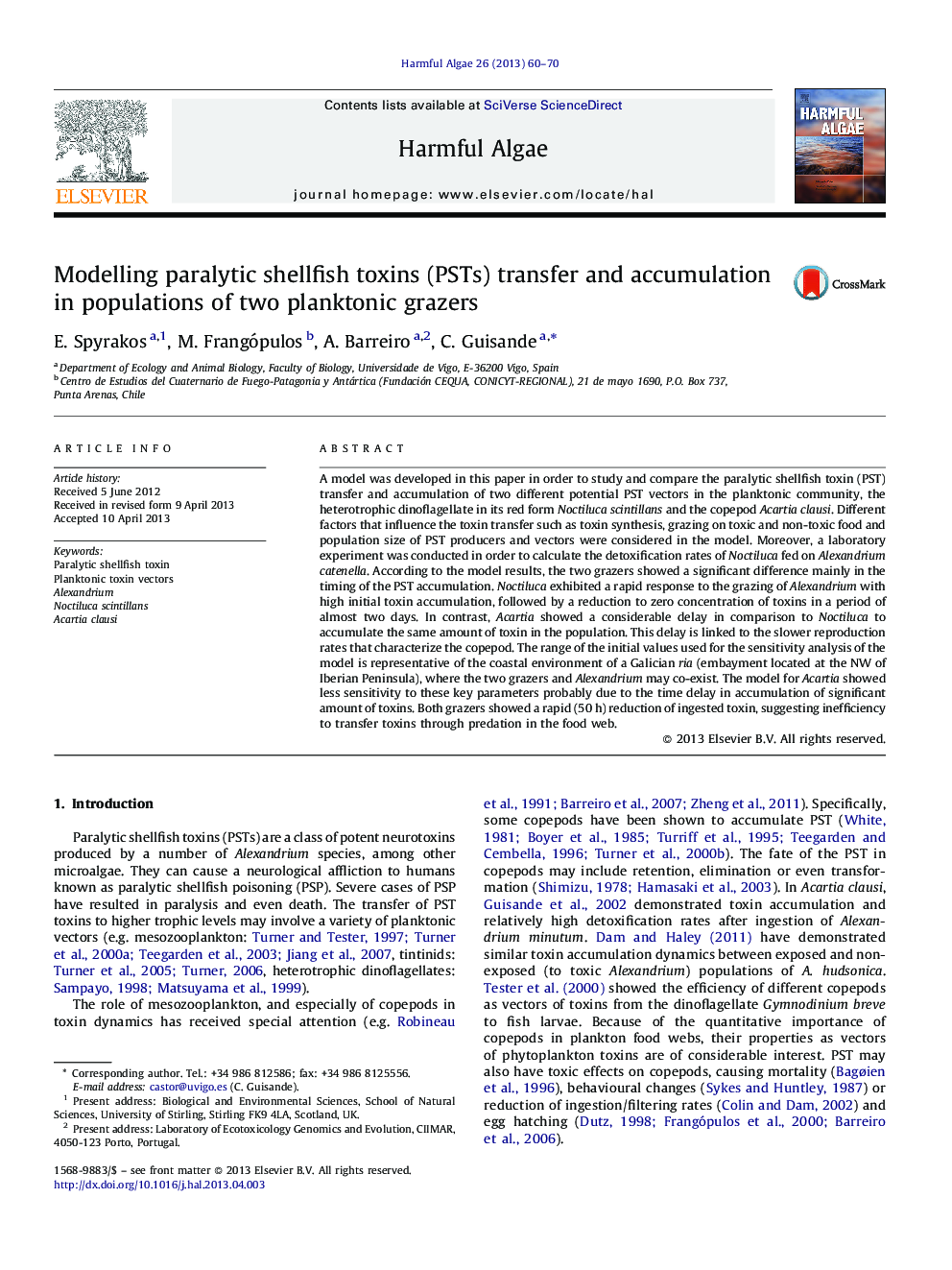| کد مقاله | کد نشریه | سال انتشار | مقاله انگلیسی | نسخه تمام متن |
|---|---|---|---|---|
| 4545439 | 1626945 | 2013 | 11 صفحه PDF | دانلود رایگان |

• We model transfer and accumulation of PST in populations of two different planktonic grazers.
• We examine the influence on this process of key environmental parameters.
• The two grazers showed differences in the timing of the PST accumulation.
• Both grazers seem inefficient to transfer toxins through predation in the food web.
A model was developed in this paper in order to study and compare the paralytic shellfish toxin (PST) transfer and accumulation of two different potential PST vectors in the planktonic community, the heterotrophic dinoflagellate in its red form Noctiluca scintillans and the copepod Acartia clausi. Different factors that influence the toxin transfer such as toxin synthesis, grazing on toxic and non-toxic food and population size of PST producers and vectors were considered in the model. Moreover, a laboratory experiment was conducted in order to calculate the detoxification rates of Noctiluca fed on Alexandrium catenella. According to the model results, the two grazers showed a significant difference mainly in the timing of the PST accumulation. Noctiluca exhibited a rapid response to the grazing of Alexandrium with high initial toxin accumulation, followed by a reduction to zero concentration of toxins in a period of almost two days. In contrast, Acartia showed a considerable delay in comparison to Noctiluca to accumulate the same amount of toxin in the population. This delay is linked to the slower reproduction rates that characterize the copepod. The range of the initial values used for the sensitivity analysis of the model is representative of the coastal environment of a Galician ria (embayment located at the NW of Iberian Peninsula), where the two grazers and Alexandrium may co-exist. The model for Acartia showed less sensitivity to these key parameters probably due to the time delay in accumulation of significant amount of toxins. Both grazers showed a rapid (50 h) reduction of ingested toxin, suggesting inefficiency to transfer toxins through predation in the food web.
Journal: Harmful Algae - Volume 26, June 2013, Pages 60–70